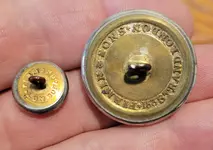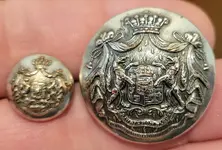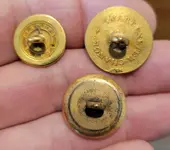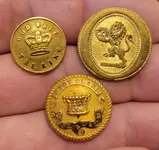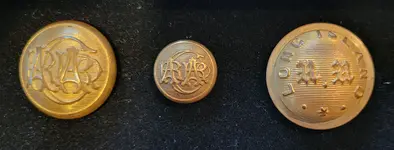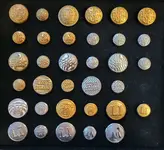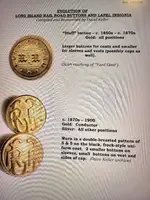D
Deleted member 140734
Guest
- #1
Thread Owner
When I first began metal detecting around 5 years ago, I was lucky enough to find a GW Inaugural Button (posted again here). Since then I have found many colonial era buttons and now have a sizeable and interesting collection. Especially fascinating to me are the old US Navy buttons, especially from the post War of 1812 to Civil War era. Since my area is surrounded by ocean, many people came from fishing and whaling stock. I live close to what was one of the principle whaling ports from the colonial period through to 1849. I have found several US Naval Officer's buttons, such as the dug 1820-30's example I show here next to a mint purchased one.
As much as I enjoy the metal detecting hobby, sometimes I despair at finding corroded artifacts and coins. Fortunately, our soils are well-drained with sand underneath, unless there is a clay lens or glacial compaction of iron infused quartz gravels. Since most areas were farmed out and lost fertility early on, they weren't subjected to the later use of agricultural chemicals that I believe are responsible for metal corrosion.
This led me to start buying historical buttons and my collection is pretty large, especially early train and air transportation. And lots of British Empire colonial pieces. Here is a photo of my group of pre-Civil War New York State Militia buttons. I also bought a nice CSA button which I keep in my collection mounted next to a US Infantry button for balance. It's kind of funny how some women are taken aback when I tell them I collect buttons, as if it isn't a manly hobby! I will post more on this thread if some people are interested in seeing them. Detectorists in general love round metallic objects made with precious metals.
Some day I hope to find an American or British Revolutionary War button. It's a top goal for me. I have found many .75 and .69 musket balls, and a one inch cast iron grapeshot. My area was occupied for most of the war, including two barracks of Hessian mercenaries nearby. So the possibilities are there.
Speaking of Hessians...I own a c 1900 copy of my town's history book. In it, they mention that the Hessians were so despised, that even a 100 years after the Revolutionary War, a popular slur was to call someone a "dirty Hessian."
As much as I enjoy the metal detecting hobby, sometimes I despair at finding corroded artifacts and coins. Fortunately, our soils are well-drained with sand underneath, unless there is a clay lens or glacial compaction of iron infused quartz gravels. Since most areas were farmed out and lost fertility early on, they weren't subjected to the later use of agricultural chemicals that I believe are responsible for metal corrosion.
This led me to start buying historical buttons and my collection is pretty large, especially early train and air transportation. And lots of British Empire colonial pieces. Here is a photo of my group of pre-Civil War New York State Militia buttons. I also bought a nice CSA button which I keep in my collection mounted next to a US Infantry button for balance. It's kind of funny how some women are taken aback when I tell them I collect buttons, as if it isn't a manly hobby! I will post more on this thread if some people are interested in seeing them. Detectorists in general love round metallic objects made with precious metals.
Some day I hope to find an American or British Revolutionary War button. It's a top goal for me. I have found many .75 and .69 musket balls, and a one inch cast iron grapeshot. My area was occupied for most of the war, including two barracks of Hessian mercenaries nearby. So the possibilities are there.
Speaking of Hessians...I own a c 1900 copy of my town's history book. In it, they mention that the Hessians were so despised, that even a 100 years after the Revolutionary War, a popular slur was to call someone a "dirty Hessian."



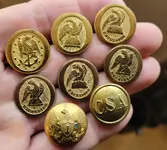
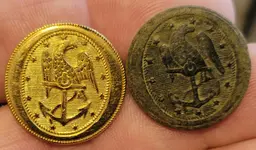
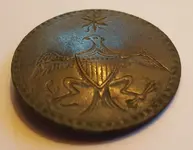

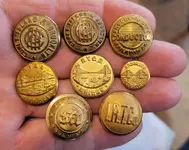
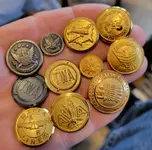
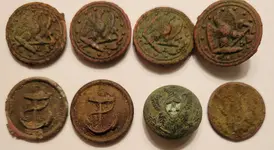
 Thanks for sharing with us
Thanks for sharing with us 